Yoga Poses for meditation helps the yogi to sit in a steady posture for extended periods of time. Also, you have to select a yoga posture that allows the spinal column to be upright and straight. There are only few yoga poses for meditation that satisfy these two conditions.
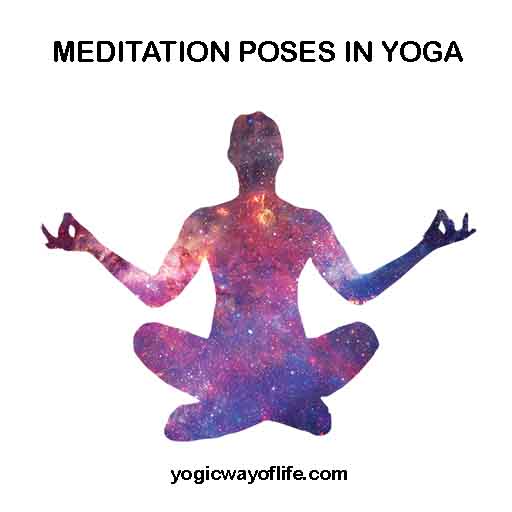
In meditation there is a need to hold the body still and steady with conscious effort. Steadiness of the body encourages the mind to be one-pointed and still. If the body moves or if there is pain in any part of the body, then it causes distraction of the mind. Supine poses like Shavasana is not ideally suited for meditation, as the practitioner may drift off to sleep. It is said that to attain success in meditation one should first attain Asana Siddhi or perfection in a sitting posture, which means one has to sit in a steady posture for at least 3 hours. Even if you can sit in an asana for one hour, you will be greatly benefited.
Using yoga poses for meditation, one should try to gain asana siddhi, which is not easy. But with regular practice, any asana or sitting posture can be mastered and you can sit for prolonged periods of time. This is called Kaya Sthairyam or steadiness of the body. During initial stages one should also practice exercises and poses to loosen up the leg and hip muscles. All the exercises in Pawan Muktasana series or Sukshma Vyamam, especially the half and full butterfly, hip rotations, Supta Udarakarshanasana, etc. is good for gaining flexibility. Any exercise or asana which helps to create flexibility of the knees, ankles, hips, lower back, pelvis, thighs, the inner thigh muscles (adductors), hamstrings, etc. can be practiced to attain the required steadiness and flexibility.
Traditionally, the yoga poses for meditation are Padmasana, Siddhasana, Ardha Padmasana, Swastikasana and Sukhasana. In the order of difficulty, as the name suggests, Sukhasana is the easiest of all and can be used for meditation for smaller durations. At the next level is Ardha Padmasana and Swastikasana which gives little more steadiness and can be used for prolonged period of time. The best, of course is Siddhasana and Padmasana, but it requires lot of steady practice to master these two sitting poses.
Here is a brief description of all the above yoga poses for meditation.
YOGA POSES FOR MEDITATION
Sukhasana or the Easy Pose
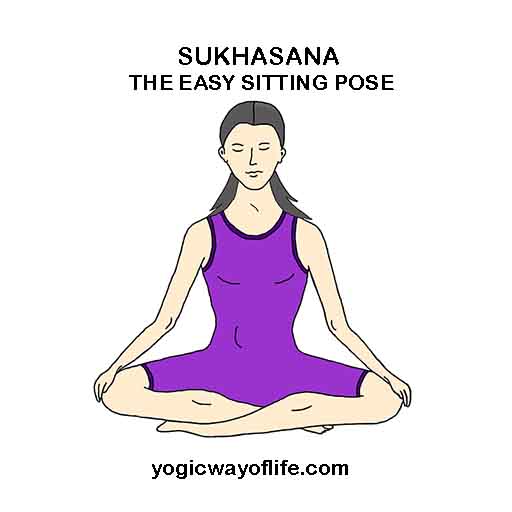
This is the easiest yoga pose for meditation. It is the simple traditional cross-legged sitting posture. Sit on the floor with legs crossed and the feet placed under the knees. Relax, breathe normally and keep the spine and neck straight, with chin slightly raised. Place the palms on the knees or the thighs. Close your eyes and practice meditation.
Swastikasana or the Auspicious Pose
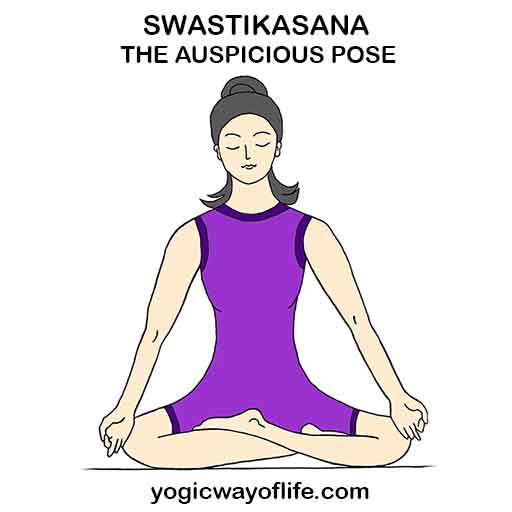
Sit on the floor and spread the legs in front of you. Now, fold the left leg and place the sole of the left feet on the inner side of the right thigh. Then bend the right leg and keep the right foot between the left thigh and the calf muscles. Tuck the right foot in between the calf and thighs to lock the pose. Keep your spine and neck straight and breathe normally. Place your hands on the knees or the thighs. This is Swastikasana, a good yoga pose for meditation for beginners.
Padmasana or the Lotus Pose
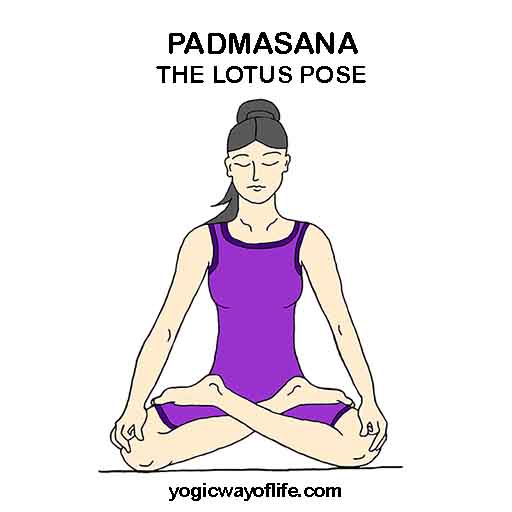
Padmasana or the lotus pose is the classical yoga pose for meditation known over centuries. Sit on the floor with legs stretched out in from of you. Bend the right leg and place the right foot on the left thigh, as close to the groins as possible. Then bend the left leg and place the left foot on top of the right leg. The legs will meet at the point just above the ankles. This is a locked position and gives stability to the sitting posture. Keep the palms on the knees or the thighs or place them one over the other on the legs, just below to the navel. One can sit for hours in this pose. But perfecting this pose is difficult for beginners. It takes prolonged practice to achieve asana siddhi in this pose. Padmasana is perfect for practice of advanced meditation.
For those who find it difficult to do Padmasana, one can start with Ardha Padmasana or the Half Lotus Pose where the right foot is placed on the left thigh and the left foot can be tucked under the right thigh. This is easier to start with and with practice, you can move on to the full Lotus pose.
Siddhasana or the Accomplished Pose
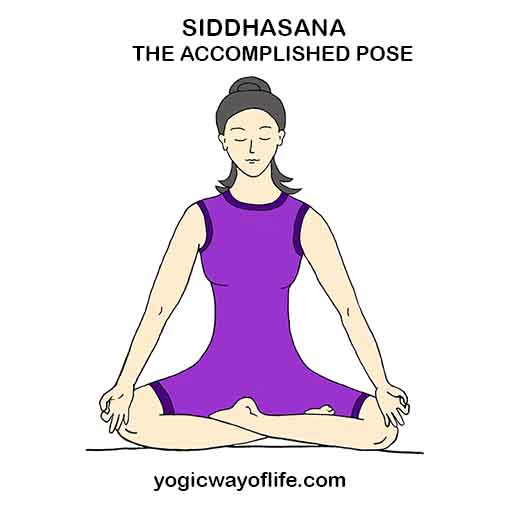
Sit on the floor in the easy cross legged position. Take the left foot and place it under the perineum (for males). For females, the left foot can be placed it within the labia majora of the vagina. Now place the right foot on the left thigh or tucked between the thigh and calf muscles. Keep the spine and neck straight and breathe normally. Place the hands on the knees or thighs. This is Siddhasana which is highly acclaimed in yogic texts.
In all the above yoga poses for meditation, there is always a doubt as to which leg should come on top. Traditional texts, for example, mentions that in Padmasana or Lotus pose, the left leg should come on top of the right leg. But there is no such hard and fast rule. The right leg may also be placed on top of the left leg. This is true for all the above mentioned poses. Just select what is comfortable for you.
Apart from these classical poses, there are few other sitting poses which can be used as yoga pose for meditation. Vajrasana and Bhadrasana are few of them, but may not be suited for all.
If you have any serious problem with your knees or leg muscles, you may also sit on a chair and practice meditation. The only condition is that you should keep the spine straight and relax the trunk, shoulders and neck. Ensure that your breathing is smooth and steady.

Hello Sir/Madam
Thank you for this information.
Regards
Arun Kumar.R